[ad_1]
At any time see the miniseries From the Earth to the Moon? Terrific story about the Apollo moon missions. I’m really positive it was in a person of those episodes that I most recall the impactful big difference involving “unit tests” and “system exams.”
Finding men and women on the moon demanded a big amount of diverse element systems, lots of each breakthrough improvements on their very own. But accomplishment depended on how nicely the complete system labored. All those elements wanted to be connected and coordinated. This was serious units integration, many years right before we ever confronted these kinds of difficulties in working day-to-day marketing and advertising.
Spoiler warn: having the whole complex program to function correct is seriously difficult.
Internet marketing may possibly not be rocket science, but as it has expanded by way of hundreds of electronic applications, algorithms, agents, actions, automations, analyses, etc. — all going sections in our Huge Ops natural environment — the obstacle of units integration in our self-discipline has grown exponentially.
Most up-to-date Stats on Tech Stack Growth
Very last month, crafting about when martech stacks develop into as well elaborate — an assessment that is relative to your martech organizational maturity — I mangled adapted Occam’s Razor to condition Martec’s Razor: other items currently being equivalent, the most straightforward stack is most effective.
But to riff on Einstein much too, a stack need to be as straightforward as feasible but no simpler. Refusing to incorporate parts that are critical to your company’s competitiveness is not a successful strategy. It would be like the Apollo missions ditching their advice technologies simply because they have been also tough to combine. “Just kinda eyeball it, fellas. It is the massive grey rock in the sky. You just can’t overlook it.”
The competitive push for digital capabilities is why businesses retain including new SaaS applications to their stacks — even at the exact time that they are removing other people that are redundant or underutilized.

A new 2023 State of SaaSOps report printed by BetterCloud, a extra upmarket SaaS administration system, gives us some up-to-date data on the common size of tech stacks at mid-sector and company organizations.
The numbers, revealed previously mentioned, are a lot more modest — and I think a lot more rationalized — than I’ve noticed in identical reports in several years earlier. Companies have ~130 SaaS applications on average. Within just BetterCloud’s longitudinal data established, they are even now demonstrating yr-in excess of-year development from 2021. But my impact is that expansion is leveling off.
Nonetheless, ~130 SaaS apps is not precisely key “consolidation” the way some folks have been predicting it. These are prosperous, heterogeneous stacks. And that basic construction does not seem to be to be modifying.
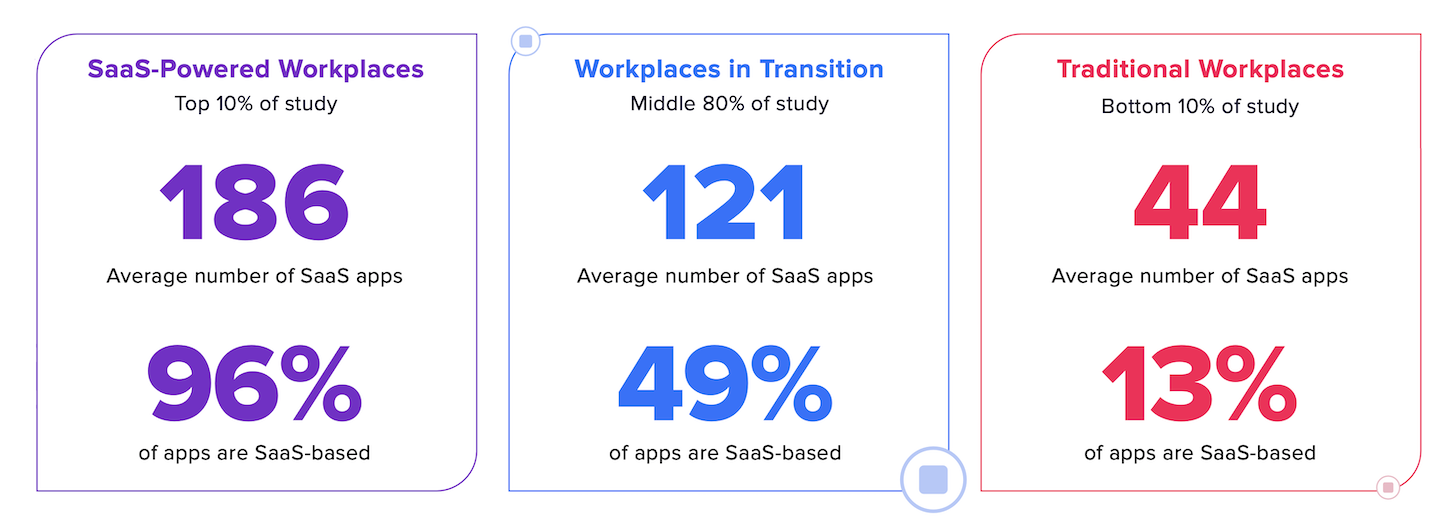
In simple fact, if you appear at companies’ tech stacks by way of the lens of their relative SaaS maturity — a distinct minimize of the facts from BetterCloud’s report — you will see that SaaS-driven workplaces, which have nearly all their applications in the cloud rather of on-prem, have a lot more like ~186 SaaS applications on typical.
If we make the rough approximation that this kind of SaaS-powered workplaces are even more alongside in their “digital transformation” than many others — I know, which is a debatable generalization — we need to hope that businesses who are further guiding will capture up. And will probable undertake extra SaaS apps in the system.
Bringing “Shadow IT” into the Mild
From a study of 743 IT gurus in the BetterCloud report, 58% of them count on It’s spending plan to improve in 2023. Where are they arranging to make investments? These are their major priorities with regard to SaaS management:
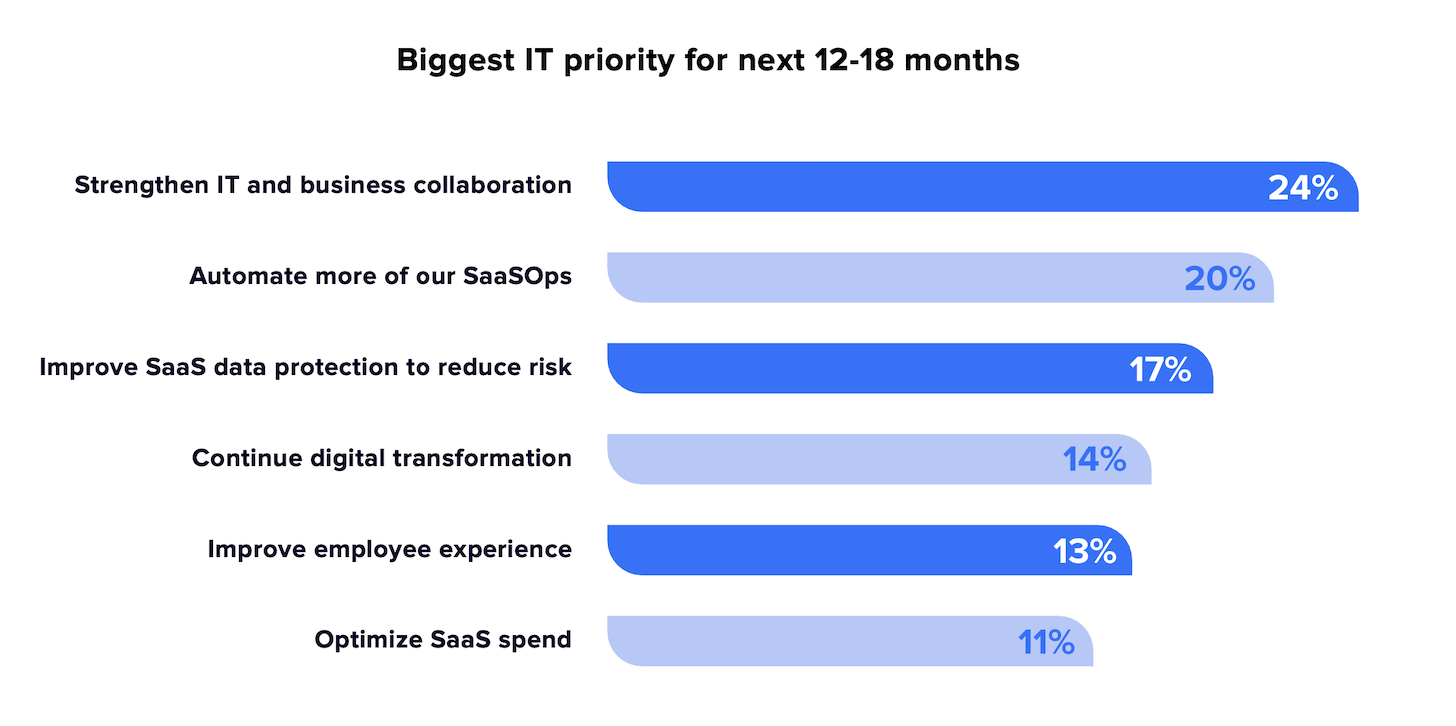
Optimizing SaaS spend — which is normally code for “consolidating apps” — is in the record. It is crucial. But other priorities are deemed far more crucial. The prime a single: improve IT and organization collaboration.
A massive portion of that mission is enabling distinct small business teams to use the apps that they deem most effective in their perform. Not in insulated silos outside of It is purview — what has traditionally been recognized as “shadow IT.” But with the ideal level of IT governance encouraging to address serious challenges and stability pitfalls with unmanaged (or undermanaged) apps.
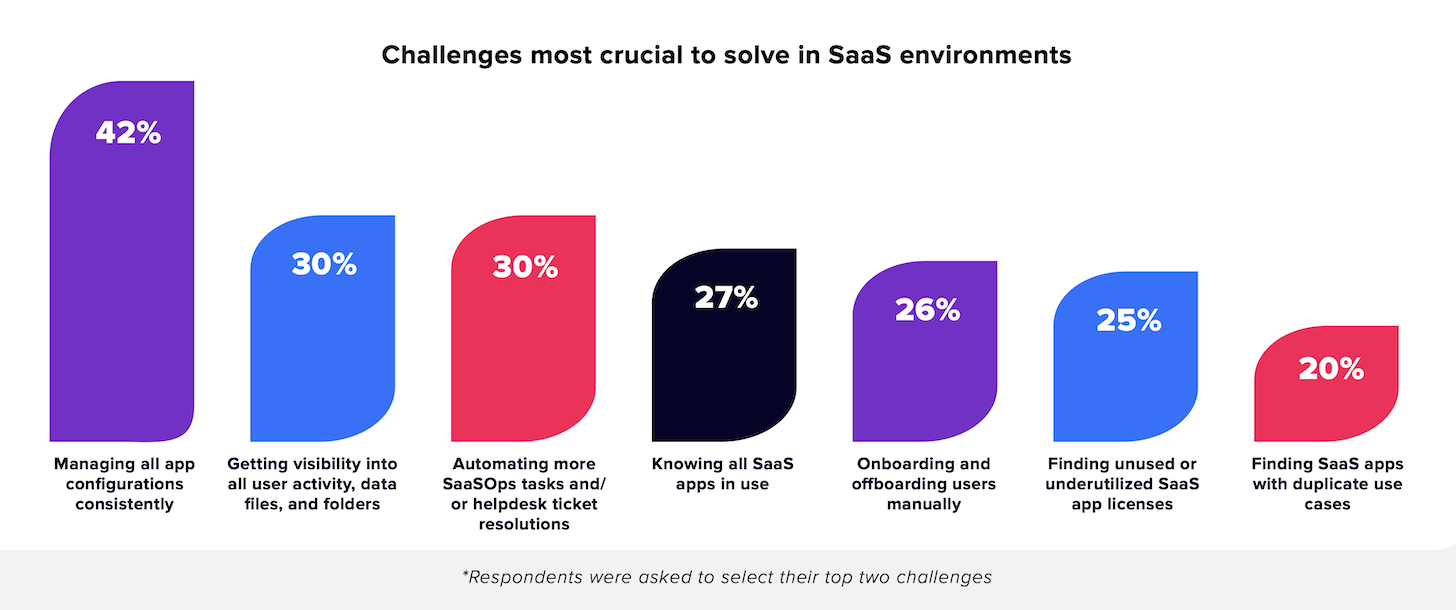
Even the most unbiased marketing and advertising ops/martech professional will acknowledge that solving these troubles in a reliable way across the small business is A Fantastic Matter. Leaning into collaboration with IT on right “SaaSOps” administration can make improvements to the lives (and professions!) of advertising and marketing ops teams — with out hindering the expansion and evolution of new martech abilities.
Getting the martech stack connected into the fabric of the relaxation of the company’s broader tech stack aids defeat these governance challenges. But it also opens the doorway to further collaboration concerning promoting and other teams in profits, shopper success, product, functions, and many others.
Orchestration > Integration > Consolidation
For numerous decades now, “integration” has been a incredibly hot-button challenge in martech. MarTech.org’s Martech Substitute Study revealed back again in July shows that much better integration was the next most frequent rationale (24%) persons resolved to swap out an present martech application. And when they picked the replacement app, integrations and open APIs were an critical component for 54% of those people customers.
The State of Martech 2022/23 report not too long ago printed by the Learning Practical experience Alliance (LXA) reinforces this truth: inadequate technologies integration is even now the principal barrier to advertising and marketing technological know-how investment decision and use today.
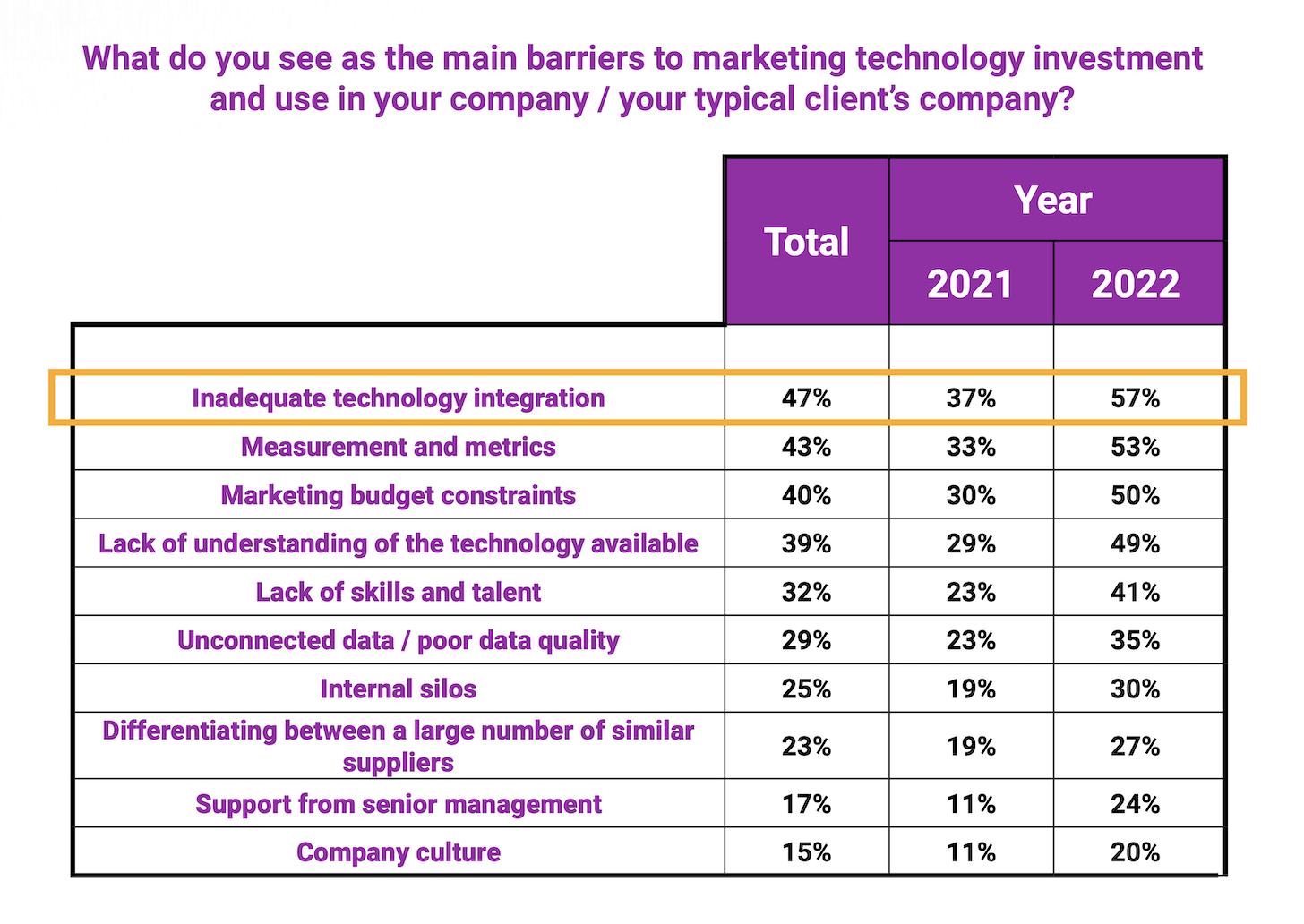
This persistent push for far better integration has develop into a sturdy motivator in the martech market. It’s why the 2nd Age of Martech, which we’re now dwelling in, is defined around platform ecosystems.
But integrating your tech stack is only the 1st step.
To seriously unlock the energy of your apps and platforms, you require to orchestrate business enterprise procedures throughout them. This requires each (a) visibility into these apps and (b) the skill to automate across them — two of the focal details for SaaSOps.
These cross-application automation could be carried out by domain-particular platforms, these as CRMs at the middle of buyer-facing workflows. Or by organization automation platforms that span the whole business enterprise. (I assume of these as vertical aggregation and horizontal aggregation styles, respectively, in matrixed tech stacks.)
Electronic orchestration is defined by the capacity to reliably run app-spanning and crew-spanning automations. It’s a greater purchase result outside of process-degree efficiency of typical automation, opening the door to new approach innovation. The tricky boundaries of intracompany silos start off to turn out to be permeable and adaptable in thrilling new methods.
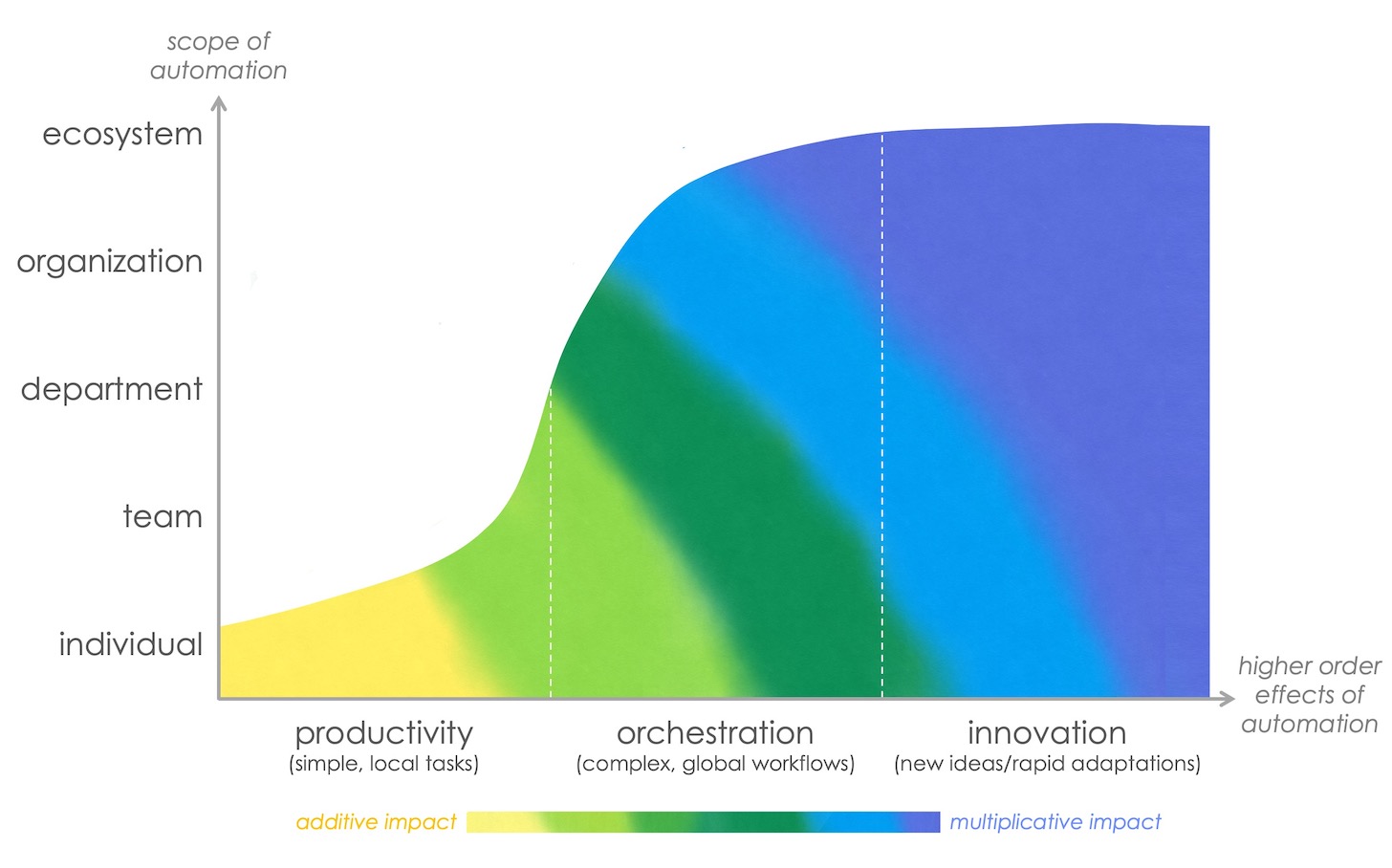
This sort of coordinated execution isn’t constrained by the (digital) walls of your corporation possibly. In the infinitely adjacent electronic ether, we can now orchestrate pursuits with our next-celebration companions too. It is why ecosystem tech is now a person of the hottest classes in martech. And it is why spouse ops, the forgotten ops, is all of a sudden thriving.
Which delivers me to the issue of the graph at the leading of this article.
A large cause why sprawling tech stacks can be so irritating is mainly because the prices of coordination across unintegrated and unorchestrated apps exceed the rewards people specialized applications supply on their personal. Each app may be good at what it does in isolation. But the whole place of a digitally transformed business enterprise is that our digital routines are not isolated, but connected with each other.
Wrangling all those interdependent connections advertisement hoc or manually quickly becomes a mess.
To make a massive stack productive, you require the capability to orchestrate the procedure as a whole. It is partially a specialized problem, which is currently being addressed by a broad subject of cloud-primarily based automation and aggregation systems. But it is also an organizational challenge, which requires new imagining and cross-staff collaboration.
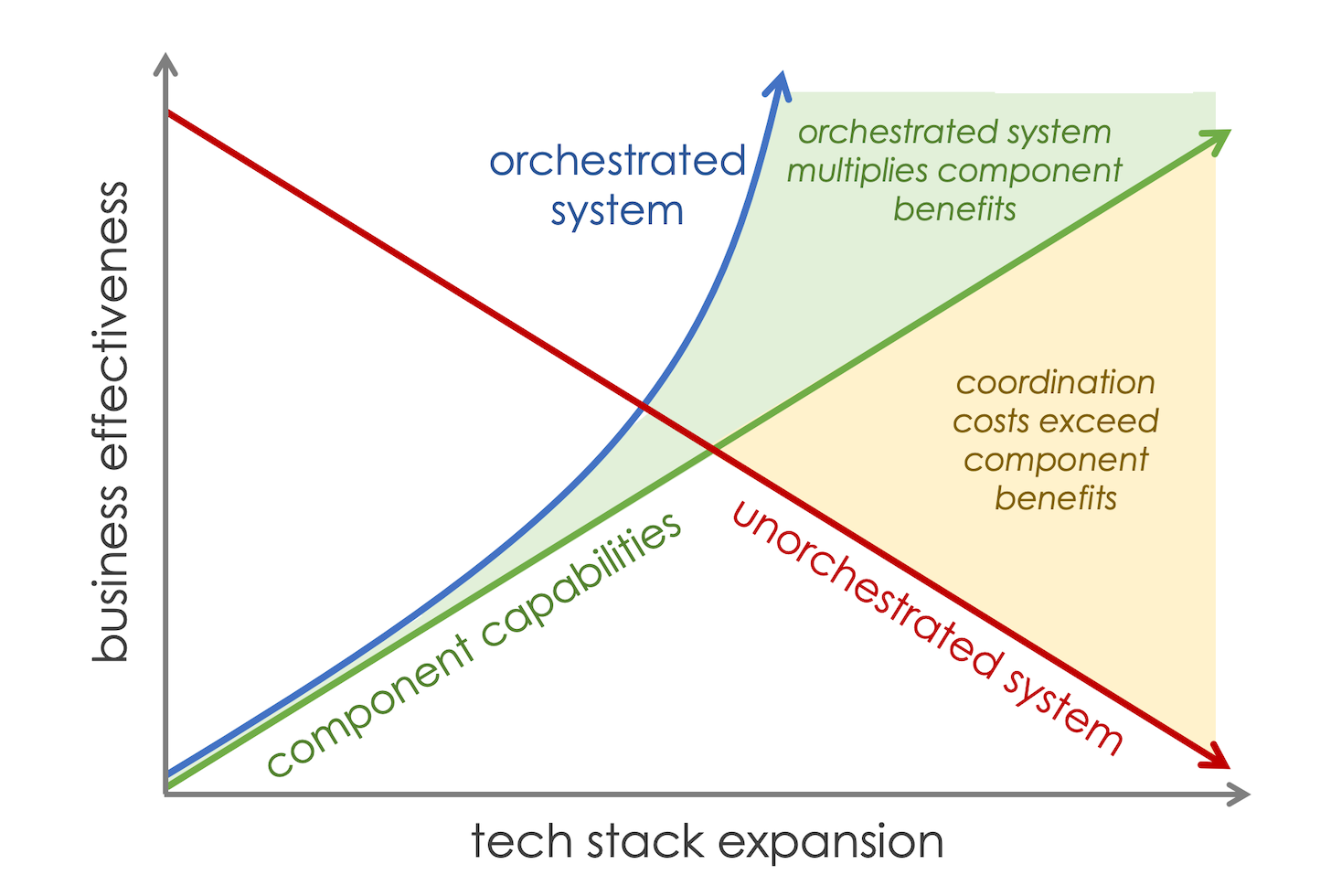
Consolidation in your tech stack is superior — as simple of a stack as possible, but no more simple. Integration across your tech stack is important also, as a needed but not adequate phase in direction of orchestration. But orchestration is the rocket engine.
This is marketing’s “system test” on our journey from the earth to the moon.
[ad_2]
Resource connection









